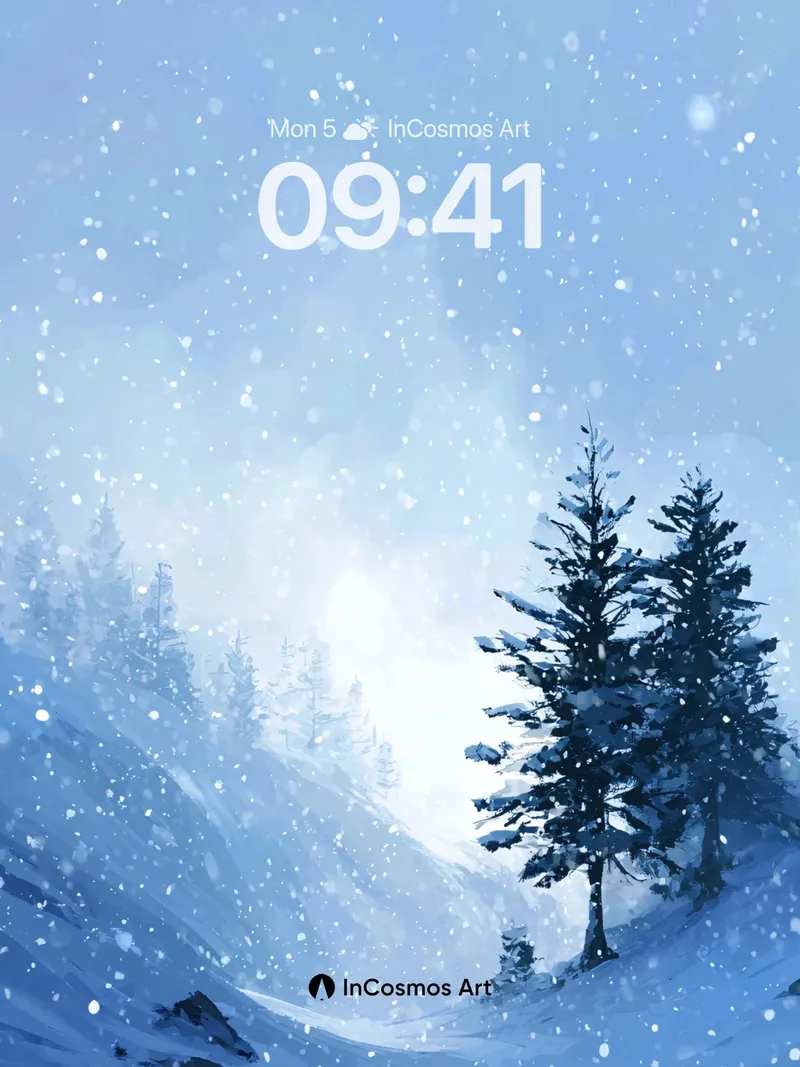Snow falls without sound, blanketing the earth like a delicate veil. Pine needles gather fine snow, golden ribbons drape over branches, and lights flicker in the cold night as if time has paused. At a city corner stands a tall Christmas tree, quiet yet radiant, becoming the warmest landmark of winter. This tree is not merely decoration—it is ritual, a bridge between nature and human emotion. When snow drifts down, people look from windows outward, seeing not just scenery, but echoes of memory. The purity of snow, the resilience of the tree, the warmth of light—these weave a collective sense of nostalgia. This feeling transcends language, existing in breath, in endurance against cold, in longing for light.
The Natural Reclamation of Holiday Symbolism
The form of the Christmas tree has been reshaped across cultures—from religious icon to commercial emblem, now reemerging as an ecological expression. These trees no longer belong only to living rooms; they appear at street centers, on canvases, within patterns. They step out of consumer contexts and return to natural order. Golden ribbons winding through needles resemble nature's own gifts; watercolor strokes blur edges, suggesting life’s fluidity with seasons. This return is not nostalgia, but deeper connection—an interplay between humans, forests, climate, and time.
Cosmic Narratives in Pattern
Repeating pine branches and star dots form a visual poem. White stars and red berries on deep green backgrounds echo constellations and fruit-bearing trees. This is not mere ornamentation, but transformation of natural elements into symbolic language. Each branch traces a journey, each berry marks a moment of growth. This design speaks not of festive noise, but abundance in silence. It invites viewers into a slower world where time is not linear, but cyclical, mirroring seasonal change.
The Art of Light and Shadow Balance
Light in snowfall feels especially precious. The star atop the tree illuminates surroundings without glare, achieving a perfect balance with darkness. This light is not a weapon against night, but a signal of coexistence. It reminds that warmth remains even in coldest moments. The contrast between gold and green, cool and warm, creates visual harmony. This equilibrium is more than aesthetic—it is psychological comfort. In uncertain times, such stability is deeply needed.
Existential Moments in Snow
When the world is covered in white, everything becomes blurred and equal. Buildings recede, streets vanish, only the tree remains standing. It does not alter its posture because of weather, nor lose meaning when unseen. This silent presence offers the certainty modern life often lacks. Amidst information overload and speed, people frequently lose themselves. The tree in snow provides a pause—a space to reconsider one’s relationship with environment and self.



























